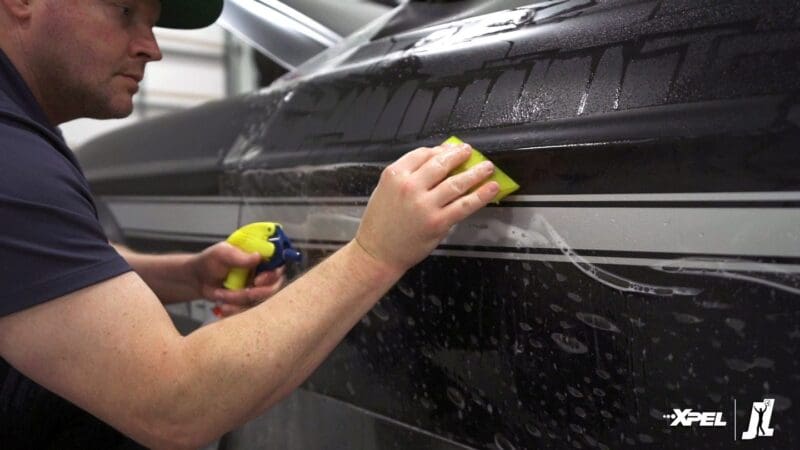Military-spec protection ensures your vehicle’s paint condition stays pristine.
Paint-protection film, commonly known as PPF, or “clear bra,” stands as one of the easiest ways to protect your vehicle from stone chips, scratches, and overall road grime. The thermoplastic urethane film can trace its roots back to the Vietnam War. During the war, the U.S. military noticed vital aircraft parts, such as helicopter rotor blades, were heavily damaged by airborne shrapnel and other debris. At military request, 3M developed a protective film known then as “helicopter tape” — it was virtually invisible, lightweight, and easy to replace.
Thanks to clever racing drivers, that military film made its way onto the track, eventually birthing PPF’s automotive sector as we know it today. In its early stages, car owners would cover high-impact zones, like wheel arches or their front bumper with PPF. However, modern PPF is so flexible that it can be applied to virtually any surface on a vehicle, regardless of angle or size. Since it comes in sections, owners can select to cover specific areas of their car or the entire body.
3D-scanning technology advances the application possibilities of PPF by studying a vehicle’s surface to determine the exact size and shape of the material needed. This results in a custom fit that reduces additional cost of wasted material. Depending on the vehicle, full-body protection can cost anywhere from $2,000 to $7,000. While there is a sizable upfront cost, these films can pay for themselves by protecting the value of your vehicle.
Now I’m no stranger to scuffs and scratches. My ride, a 1987 Porsche 911, sports three decades’ worth of wear and tear, pushing it into “driver” condition. This is less of a problem when you’re planning to retire alongside your fossil fuel burner, but it makes a big difference when it comes time to sell. Whether browsing classic or modern listings, high-end vehicle buyers look for paint condition as a vital determination of value.
Repainting surfaces or reconditioning significant portions of your vehicle has preliminary costs as well as potential long-term value loss. This is especially true on low-volume vehicles with unique paint jobs such as a Porsche’s paint to sample or Ferrari’s tailor-made.
Even if your car’s PPF becomes partially damaged, it has self-healing properties that work to eliminate light scratches. Other advances in the film’s tech mean that a well-protected layer of PPF should last between five to seven years, giving its owners plenty of worry-free miles.
This article appeared in our August 2022 issue.
